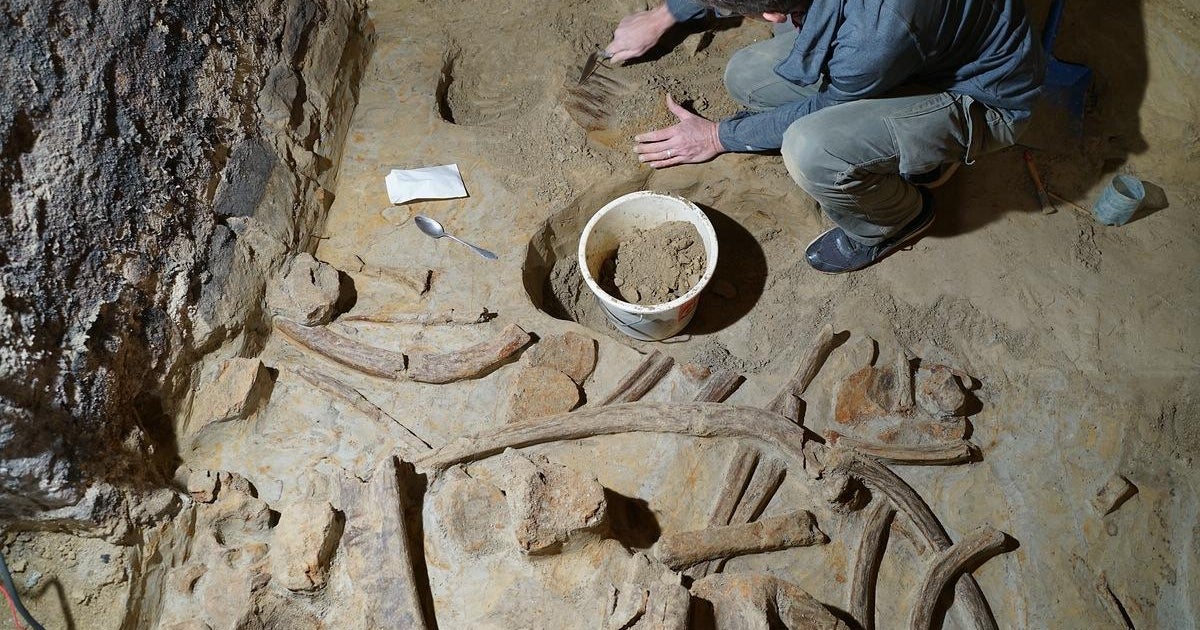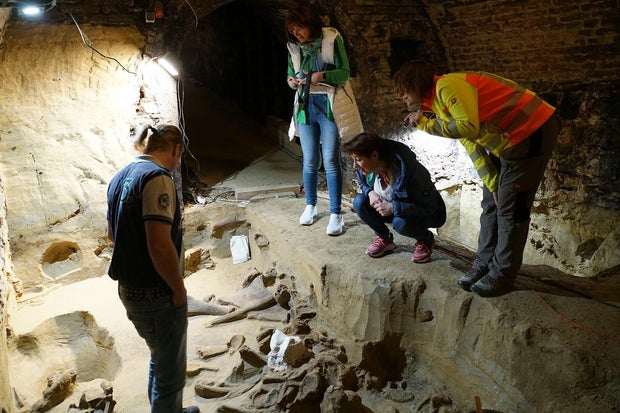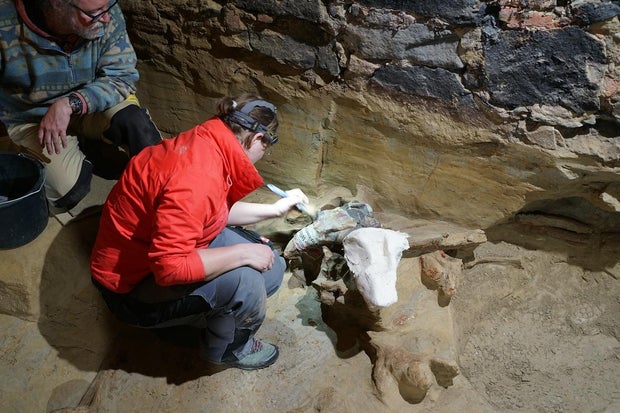CBS News
A man found bones in his wine cellar. They were from 40,000-year-old mammoths.

Andreas Pernerstorfer was renovating his wine cellar in Gobelsburg, Austria when he made an astounding discovery. It wasn’t vintage wine – it was the giant bones of an extinct mammoth that date back 30,000 to 40,000 years.
He reported the bones to the Austrian Archaeological Institute of the Austrian Academy of Sciences, which began excavating the Stone Age bones.
The researchers realized other artifacts like jewelry and fossils had been discovered 150 years prior in the wine cellar next door. Bones of this significance haven’t been found in more than 100 years, according to the researchers.
© OeAW-OeAl/Th. Einwögerer
“Such a dense bone layer of mammoths is rare,” says Hannah Parow-Souchon, who is leading the excavation. “It’s the first time we’ve been able to investigate something like this in Austria using modern methods.”
They have found a layer of bones from three different mammoths laying on top of each other, a discovery that raises many questions about how humans in the Stone Age hunted mammoths. The researchers say the mammoths could’ve been trapped at the site by humans.
“We know that humans hunted mammoths, but we still know very little about how they did it,” researcher Parow-Souchon said.
© Yannik Merkl
After the researchers examine the bones, they will be given to the Natural History Museum Vienna.
Mammoths lived in Africa about 3 or 4 million years ago and their descendants moved to Europe and Asia, according to the University of California Museum of Paleontology. The mammoth species in on these continents lived from 200,000 to 135,000 years ago and after another Ice Age, wooly mammoths traveled to North America, crossing the Bering Straight between what is now Russia and Alaska when sea level were low. These mammoths lived as far inland as what is now Kansas.
© OeAW-OeAl/H. Parow-Souchon
According to the Penn State University Mammoth Genome Project, during the Pleistocene epoch – 1.8 million to 10,000 years ago – humans hunted mammoths for their meat and for building materials.
Researchers estimate there were several million mammoths during the early to mid Pleistocene epoch, but in the later years of this epoch, hunting could have affected the mammoth population.
CBS News
11/24/2024: Disrupter U.; Humans in the Loop; Lowriders of New Mexico

Watch CBS News
Be the first to know
Get browser notifications for breaking news, live events, and exclusive reporting.
CBS News
11/24: The Takeout: Sen. Joe Manchin

Watch CBS News
Be the first to know
Get browser notifications for breaking news, live events, and exclusive reporting.
CBS News
UATX says it fights college censorship culture with a focus on free speech | 60 Minutes

Watch CBS News
Be the first to know
Get browser notifications for breaking news, live events, and exclusive reporting.






